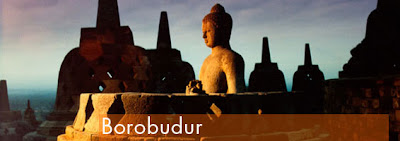
Who
does not know Borobudur? This Buddhist temple has 1460 relief panels
and 504 Buddha effigies in its complex. Millions of people are eager to
visit this building as one of the World Wonder Heritages. It is not
surprising since architecturally and functionally, as the place for
Buddhists to say their prayer, Borobudur is attractive.
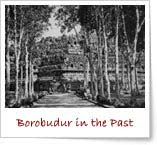
Borobudur
was built by King Samaratungga, one of the kings of Old Mataram
Kingdom, the descendant of Sailendra dynasty. Based on Kayumwungan
inscription, an Indonesian named Hudaya Kandahjaya revealed that
Borobudur was a place for praying that was completed to be built on 26
May 824, almost one hundred years from the time the construction was
begun. The name of Borobudur, as some people say, means a mountain
having terraces (budhara), while other says that Borobudur means
monastery on the high place.
Borobudur
is constructed as a ten-terraces building. The height before being
renovated was 42 meters and 34.5 meters after the renovation because
the lowest level was used as supporting base. The first six terraces
are in square form, two upper terraces are in circular form, and on top
of them is the terrace where Buddha statue is located facing westward.
Each terrace symbolizes the stage of human life. In line with of Buddha
Mahayana, anyone who intends to reach the level of Buddha's must go
through each of those life stages.
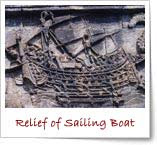
The
base of Borobudur, called Kamadhatu, symbolizes human being that are
still bound by lust. The upper four stories are called Rupadhatu
symbolizing human beings that have set themselves free from lust but
are still bound to appearance and shape. On this terrace, Buddha effigies
are placed in open space; while the other upper three terraces where
Buddha effigies are confined in domes with wholes are called
Arupadhatu, symbolizing human beings that have been free from lust,
appearance and shape. The top part that is called Arupa symbolizes
nirvana, where Buddha is residing.
Each
terrace has beautiful relief panels showing how skillful the sculptors
were. In order to understand the sequence of the stories on the relief
panels, you have to walk clockwise from the entrance of the temple. The
relief panels tell the legendary story of Ramayana. Besides, there are
relief panels describing the condition of the society by that time; for
example, relief of farmers' activity reflecting the advance of
agriculture system and relief of sailing boat representing the advance
of navigation in Bergotta (Semarang).
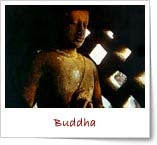
All
relief panels in Borobudur temple reflect Buddha's teachings. For the
reason, this temple functions as educating medium for those who want to
learn Buddhism. YogYES suggests that you walk through each narrow
passage in Borobudur in order for you to know the philosophy of
Buddhism. Atisha, a Buddhist from India in the tenth century once
visited this temple that was built 3 centuries before Angkor Wat in
Cambodia and 4 centuries before the Grand Cathedrals in Europe.
Thanks
to visiting Borobudur and having supply of Buddha teaching script from
Serlingpa (King of Sriwijaya), Atisha was able to improve Buddha's
teachings after his return to India and he built a religion
institution, Vikramasila Buddhism. Later he became the leader of
Vikramasila monastery and taught Tibetans of practicing Dharma. Six
scripts from Serlingpa were then summarized as the core of the teaching
called "The Lamp for the Path to Enlightenment" or well known as
Bodhipathapradipa.
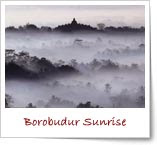
A
question about Borobudur that is still unanswered by far is how the
condition around the temple was at the beginning of its foundation and
why at the time of it's finding the temple was buried. Some hypotheses
claim that Borobudur in its initial foundation was surrounded by swamps
and it was buried because of Merapi explosion. It was based on Kalkutta
inscription with the writing 'Amawa' that means sea of milk. The
Sanskrit word was used to describe the occurrence of disaster. The sea
of milk was then translated into Merapi lava. Some others say that
Borobudur was buried by cold lava of Merapi Mountain.
With
the existing greatness and mystery, it makes sense if many people put
Borobudur in their agenda as a place worth visiting in their lives.
Besides enjoying the temple, you may take a walk around the surrounding
villages such as Karanganyar and Wanurejo. You can also get to the top
of Kendil stone where you can enjoy Borobudur and the surrounding
scenery. Please visit Borobudur temple right away...





